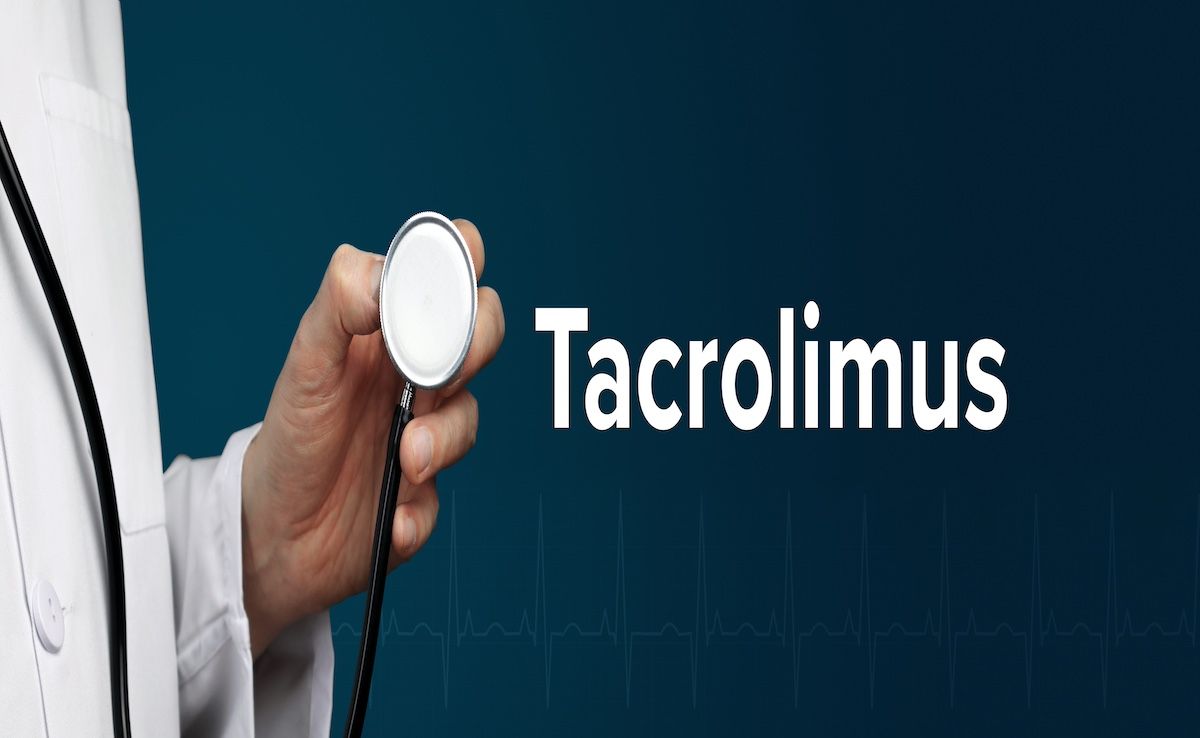- Center on Health Equity & Access
- Clinical
- Health Care Cost
- Health Care Delivery
- Insurance
- Policy
- Technology
- Value-Based Care
Tacrolimus Linked to Lower Acute GVHD Risk
Posttransplantation treatment with either tacrolimus or cyclosporine A results in favorable outcomes, but tacrolimus may be better at preventing severe graft-versus-host disease (GVHD), according to new study findings.
New study results suggest that tacrolimus and cyclosporine A are similarly effective in maintaining long-term survival and reducing relapse in patients with acute myeloid leukemia (AML) post transplant.
The study conducted by the Acute Leukemia Working Party of the European Society for Blood and Marrow Transplantation examined whether the choice of calcineurin inhibitor has an impact on the outcome of graft-versus-host disease (GVHD) in patients who underwent allogeneic hematopoietic cell transplantation (HCT) while in first complete remission. The study, published in Bone Marrow Transplantation, compared the effectiveness of tacrolimus vs cyclosporine A when used in combination with posttransplantation cyclophosphamide and mycophenolate mofetil in preventing GVHD.1
The study analyzed data from 2427 patients who received a transplant from either a haploidentical donor (n = 1844) or an unrelated donor (n = 583) between 2010 and 2021. Patients received either tacrolimus (37%) or cyclosporine A (63%) combined with posttransplantation cyclophosphamide and mycophenolate mofetil as part of their GVHD prophylaxis.
The study found no significant differences between patients treated with cyclosporine A and those receiving tacrolimus in key outcomes such as 2-year leukemia-free survival (LFS), overall survival (OS), nonrelapse mortality, or the cumulative incidence of relapse. At the 2-year mark, LFS was 60.5% among those who received cyclosporine A and 60.3% for those who received tacrolimus, with no significant difference between the groups (P = .92). Similarly, there was no meaningful difference in OS between the groups, with 66.3% for cyclosporine A and 64.5% for tacrolimus (P = .75). Nonrelapse mortality was comparable as well, at 18.5% and 18.0%, respectively (P = .44). Additionally, the corresponding cumulative incidences of relapse were 21.1% and 21.7% (P = .51), again showing no significant variation.
Findings from this investigation suggest that tacrolimus and cyclosporine A are similarly effective in maintaining long-term survival and reducing relapse in patients with acute myeloid leukemia post transplant.| Image Credit: © MQ-Illustrations - stock.adobe.com

However, the authors note that "In haploidentical HCT, tacrolimus seemed to prevent severe acute GVHD more effectively than cyclosporine A without impact on other outcome parameters." The findings of the study revealed that tacrolimus was associated with a lower incidence of severe grade 3-4 acute GVHD compared with cyclosporine A (6.6% vs 9.1%; P = .02). The multivariate analysis confirmed this finding, showing that tacrolimus was associated with a lower risk of severe acute GVHD (HR, 0.64; 95% CI, 0.42-0.98; P = .04) in patients who received a haploidentical transplant. This effect was not seen in patients who received unrelated donor transplants (HR, 0.49; 95% CI, 0.2-1.21; P = .12).
Despite tacrolimus's advantage in reducing severe acute GVHD, the study found no significant difference in outcomes between the 2 groups in other areas of GVHD management. The incidence of grade 2-4 acute GVHD was 27.3% in the cyclosporine A group and 25.2% in the tacrolimus group (P = .34), and the occurrence of extensive chronic GVHD was also similar between the 2 groups, affecting 9.9% and 11.8%, respectively (P = .25). Furthermore, relapse-free survival at 2 years was similar between the cohorts (51.3% vs 50.2%; P = .86).
This study adds to the growing body of evidence supporting the use of tacrolimus in certain transplant settings2,3; however, the researchers emphasized that both tacrolimus and cyclosporine A, when used with posttransplantation cyclophosphamide and mycophenolate mofetil, are effective in preventing GVHD, with favorable survival outcomes for patients with AML in first complete remission.
Based on the results of this study, the authors conclude, "In haploidentical HCT, tacrolimus seemed to prevent severe acute GVHD more effectively than cyclosporine A without impact on other outcome parameters and may be the preferred combination partner with mycophenolate mofetil for patients with AML in first complete remission."
References
1. Bug G, Labopin M, Kulagin A, et al. Tacrolimus versus cyclosporine A combined with post-transplantation cyclophosphamide for AML in first complete remission: a study from the acute leukemia working party (EBMT). Bone Marrow Transplant. 2024;59:1394-1401. doi:10.1038/s41409-024-02331-1
2. Nash RA, Antin JH, Karanes C, et al. Phase 3 study comparing methotrexate and tacrolimus with methotrexate and cyclosporine for prophylaxis of acute graft-versus-host disease after marrow transplantation from unrelated donors. Blood. 2000;96:2062-2068.
3. Hamilton BK, Liu Y, Hemmer MT, et al. Inferior outcomes with cyclosporine and mycophenolate mofetil after myeloablative allogeneic hematopoietic cell transplantation. Biol Blood Marrow Transplant. 2019;25(9):1744-1755. doi:10.1016/j.bbmt.2019.05.019
